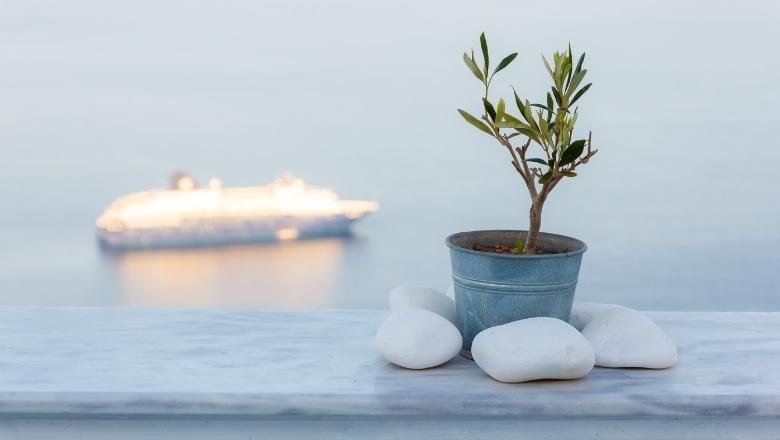Is It Safe To Repot An Olive Tree? How To Do It?
Olive Knowledge is a part of Amazon Associates. As an Amazon Associate, we earn from qualifying purchases. Read our Affiliate Disclosure to learn more.

Repotting olive trees into larger containers is crucial for their healthy growth. Since I was in that situation as well, I know that many people are afraid to re-pot their olive trees. In this post, I’ll show you whether it’s safe or not to repot an olive tree, but also how to do it.
Key Takeaways:
- Repotting olive trees is safe and necessary for growth.
- Only repot when needed; choose a pot at least 2 inches larger.
- Reasons to re-pot olive trees: nutrient-rich soil, growth, root development.
- Repot every 3-4 years when too large or unhealthy.
- Never leaving in the same pot prevents nutrient depletion and root issues.
- Repotting ensures a longer life for potted olive trees.
Guidelines To Follow When Repotting Olive Trees
In order to keep the repotting process safe for the tree, you should follow some guidelines. So, here they are:
- Don’t repot the tree for no reason
- Choose at least 2 inches larger pot than the old one
- Use a pot with drainage holes (obligatory) – olive trees don’t grow well in soils that are too wet, and the drainage hole will let the water out of the containers, which is extremely important.
- Put some grit at the bottom of the pot – to get even better drainage, put some grit, gravel, or stones at the bottom of the pot. That’ll allow the excess water from the soil to drain more easily.
- Use clay or wood containers only – avoid using plastic containers because they don’t drain the water, as well as wood or clay containers.
- Gently tease off the old soil from the roots – old soil is already empty with nutrients, and teasing it off from the roots will allow new compost to get closer to the roots and feed them.
- Use a well-draining soil type – olive trees don’t like wet soils. So, make sure to buy some well-draining kind of soil. You can make it by yourself by mixing potting soil and perlite or small rocks.
- Add fertilizers to the soil – it’s essential to add some fertilizers to the soil, giving the soil essential vitamins and minerals for healthy olive growth. TreeHelp Premium Fertilizer For Olive is an excellent product for that purpose.
- Try to do it in spring.
- Be as gentle as possible; don’t force anything.
If you need a complete guide on repotting olive trees, here’s a great one.
Why Repotting Is Important

As I already said at the beginning of the article, not only transplanting olive trees is safe, but it’s also essential to keep them as healthy as possible.
Reasons why repotting is important:
- Olive trees will get new soil that is full of essential nutrients for the plant.
- Transplanting olive trees into a larger container will allow them to grow even more.
- Small containers keep the roots from developing, and that may have bad consequences for the tree.
- Containers aren’t a natural area for olive trees, and because of that, they should be updated every few years.
I know many people who had problems with their olive trees in pots. They asked me for advice, and I told them to repot the trees, and after they listened to my advice, the trees healed quickly and started growing again.
How Often To Repot An Olive Tree
Now, you probably wonder how often to repot olive trees, especially after I mentioned that they shouldn’t be repotted for no reason.
You should repot olive trees:
- If they stayed in the same pot for 3-4 years.
- If the tree becomes too large for the container and the container is damaged because of root development.
- If the tree isn’t healthy and is dying, repotting it may save its life.
If you follow a general rule of repotting the olive tree every 3-4 years, situations with unhealthy growth or oversizing a container will probably never happen.
Also, whenever you repot an olive tree, make sure always to choose a larger pot. It should be at least 2 inches larger than the old one, and that way, the plant will have more room to grow.
What If You Never Repot An Olive Tree
The worst thing you can do is leave the olive tree in the same pot and never transplant it to a new container.
Nutrients from the soil will be fully consumed, and the ground won’t be suitable for olive growth, leading to the tree’s death.
In order to grow correctly, olive trees need well-developed roots. By keeping them in the same container for a long time, roots won’t grow anymore, and they won’t be able to absorb enough healthy nutrients from the ground.
With time, the drainage properties of the soil inside the container will lower, and the soil will keep the water instead of draining it. Remember, olive trees don’t like wet ground. Of course, they need water, but the soil shouldn’t be too moist.
Moist soil is hazardous in winter when the temperatures are going down. Olive trees can handle the colder temperatures, but if the soil is too wet, it’ll freeze, and the plant may die. That’s why well-draining kinds of soil are essential for olive trees.
Conclusion
By following the guidelines I showed you above in the article, the process of repotting olive trees will be completely safe for them. I hope you understood everything and gave you a thorough enough answer with all the essential information.
Even though the ground is the best natural area for growing olive trees, they can grow healthy inside the pots, but they should be transplanted regularly. That way, trees can live longer as long as you have a large enough pot and a place where they can get enough sun every day.
Similar Articles For You:
